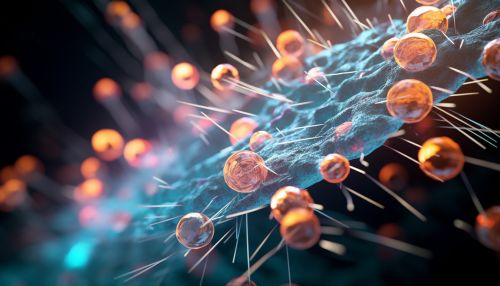The Science of Bacterial Communication and Quorum Sensing
Introduction
The science of bacterial communication, also known as quorum sensing, is a complex and fascinating field of study. Quorum sensing is a system of stimuli and response correlated to population density. Many species of bacteria use quorum sensing to coordinate gene expression according to the density of their local population. In similar fashion to the principles observed in swarm behavior, quorum sensing enables bacteria to express certain behaviors collectively, enhancing their effectiveness and impact.
Mechanism of Quorum Sensing
Quorum sensing is facilitated through the production, release, detection, and response to small diffusible signal molecules called autoinducers. These molecules are produced by bacterial cells and released into the environment. As the population density of the bacterial colony increases, so does the concentration of the autoinducer. Once the concentration of the autoinducer reaches a certain threshold, it triggers a change in gene expression in the bacterial cells.


Types of Quorum Sensing
There are three main types of quorum sensing systems in bacteria: the AHL system, the AIP system, and the AI-2 system. Each of these systems is characterized by the type of autoinducer molecule they use for communication.
AHL Quorum Sensing
The AHL system is predominantly found in Gram-negative bacteria. The autoinducer used in this system is N-acyl homoserine lactone (AHL). AHL molecules are synthesized by the LuxI protein and can freely diffuse across the bacterial cell membrane. Once the concentration of AHL in the environment reaches a certain threshold, it binds to the LuxR protein, triggering a change in gene expression.
AIP Quorum Sensing
The AIP system is used by Gram-positive bacteria. The autoinducer used in this system is a peptide. Unlike AHL, these peptides cannot freely diffuse across the bacterial cell membrane. Instead, they are actively transported out of the cell. Once the concentration of the peptide reaches a certain threshold, it binds to a two-component signal transduction system, triggering a change in gene expression.
AI-2 Quorum Sensing
The AI-2 system is used by both Gram-negative and Gram-positive bacteria. The autoinducer used in this system is a furanosyl borate diester. This molecule is produced by the LuxS protein and can freely diffuse across the bacterial cell membrane. Once the concentration of the autoinducer reaches a certain threshold, it binds to a receptor protein, triggering a change in gene expression.
Applications of Quorum Sensing
The understanding of quorum sensing has significant implications in various fields, including medicine, agriculture, and biotechnology.
In medicine, quorum sensing is associated with the pathogenicity of certain bacteria. Many pathogenic bacteria use quorum sensing to coordinate the expression of virulence factors. Disrupting quorum sensing in these bacteria could potentially reduce their virulence, making them easier to treat.
In agriculture, quorum sensing can be used to promote the growth of beneficial bacteria and inhibit the growth of harmful bacteria. Certain bacteria use quorum sensing to produce biofilms that protect plant roots from pathogens. Enhancing the quorum sensing ability of these bacteria could potentially increase their protective effect.
In biotechnology, quorum sensing can be used to engineer bacteria that can perform specific tasks. For example, bacteria can be engineered to express a certain gene only when their population density reaches a certain level. This could be used to control the production of certain substances, such as biofuels or pharmaceuticals.
Conclusion
The science of bacterial communication and quorum sensing is a rapidly evolving field with significant potential for practical applications. As our understanding of this complex communication system continues to grow, so too does the potential for innovative solutions to some of our most pressing challenges.
